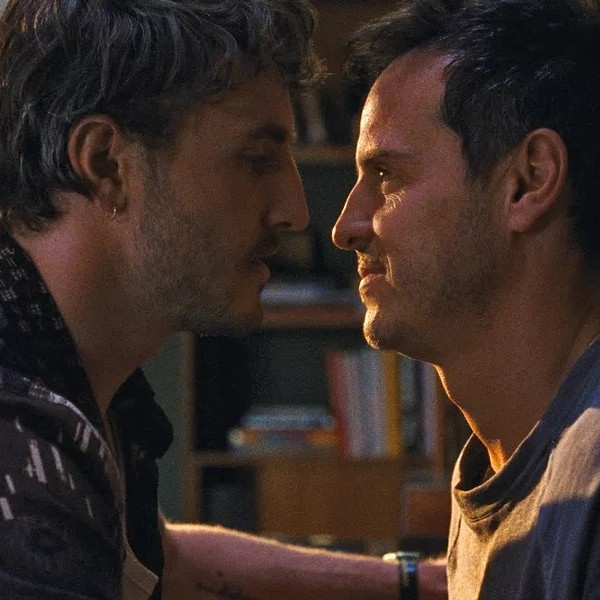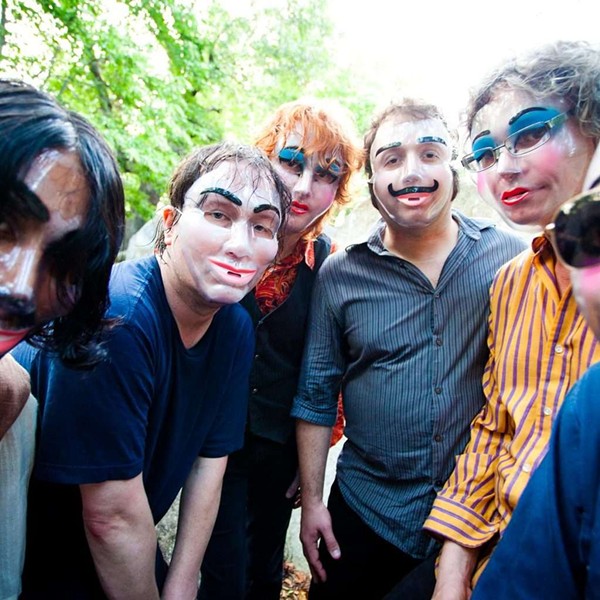Tamblyn, the gifted 24-year-old actress who plays the title role, thinks that Brougher has a striking talent for delving into ambiguity. “I think the hardest thing to do in the world is write the gray areas, the areas of our lives where God lies, within the things we can’t explain,” she says. “Hilary attacks all of it with simplicity, truth, and danger.”
Brougher started making films in adolescence, when shyness prevented her from relating well to her peers. In her parents’ house, just outside Woodstock, there was a large basement where she could construct cardboard sets for her Super-8 films. MTV was just taking off, and Brougher made her own surreal pop videos, conscripting other arty adolescents to be her actors. “Working with other awkward, arty kids was a big part of my meager self-development,” she says. Directing movies gave her a place in the social hierarchy; it was also fun. “We used a lot of hairspray and eye shadow,” she recalls.
She also found refuge on weekends at Upstate Films, where her parents would take her to see almost every film on the calendar, “unless it was obviously, wildly inappropriate.” She loved the opening of Nosferatu, with its chilling images of bones in a crypt. “I learned that powerful visual images, on their own, could speak volumes,” she says. The influence has played out in her own films—for example, in the opening moments of Stephanie Daley, where we see a girl stumbling across a snowy hillside, a trail of bloody footprints left in her wake. “It’s important to create connection and emotion using images,” Brougher says.
Over the years, Brougher has tried her hand at writing science fiction, horror, and historical drama. “I love genre movies,” she says. “It’s difficult to get anything made, so you have to try a bit of everything.” This polyglot tendency developed after she graduated in filmmaking from the School of Visual Arts, where she met her husband, cinematographer Ethan Mass. The school emphasized production skills over screenwriting, so after graduating Brougher spent years teaching herself to write screenplays by trial and error, paying the rent by working occasional production jobs as a script supervisor and story editor.
Eventually, the production company Good Machine picked up her screenplay The Sticky Fingers of Time, a time-travel fantasy involving a blocked writer, a lesbian love affair, and the H-bomb. Filmed in both black-and-white and color, Sticky is a provocative mixture of period drama, sci-fi speculation, and feminism. Brougher describes it as “a playful movie that’s trying to get people to use their imaginations.”
Sticky achieved a cult following and was praised for its inventiveness, but Brougher felt she could do a better job of writing complex characters. “Sticky was more about plot twists,” she says. “After that, I wanted to do something more naturalistic, to challenge myself. I thought that I really needed to learn how to work with actors and to tell human stories in the moment.”
With Stephanie Daley, she says, “I wanted to do a story about a person who was living one life on the outside, and another life on the inside. A concealed pregnancy seemed to me to be the ultimate secret—especially for an adolescent.”
Safe Haven
As Brougher began to do research, she found many cases of teens who’d concealed pregnancies and been accused of killing or abandoning their babies. One of the most tragic is New Jersey’s Melissa Drexler, who was sentenced to 15 years in prison in 1998 for disposing of her baby in a bathroom at her high school prom. More recently, teenage girls in Colorado and Maryland have been tried for murdering babies after concealed pregnancies. “These cases continue to happen, and a lot of them don’t make the headlines,” Brougher says. “You can’t put it down to race or economics, because it crosses all those lines.”
Although recent changes in legislation have tried to address the problem—since 1999, many states have enacted “safe haven” laws, allowing parents to abandon a baby at a hospital, police station, or firehouse without any legal consequences—Brougher says they might not be getting to the root causes. New York passed a safe-haven law in 2001, but, despite this apparent advance, babies continue to be killed after concealed pregnancies. “In a lot of cases I read about, girls would go into these states of shock and dissociation,” says Brougher. “They can’t even admit to themselves that they’re pregnant. A heater doesn’t do a freezing person any good unless they can admit they’re cold and turn it on.”
















